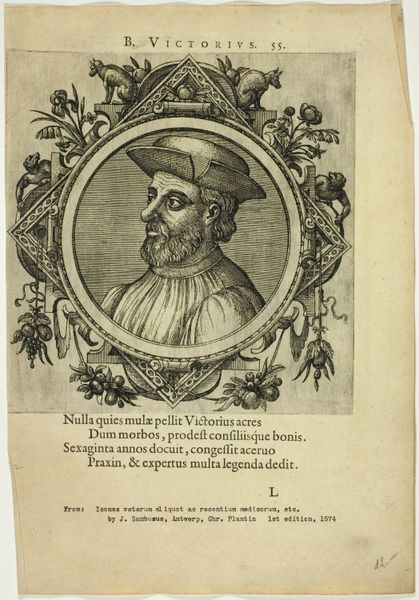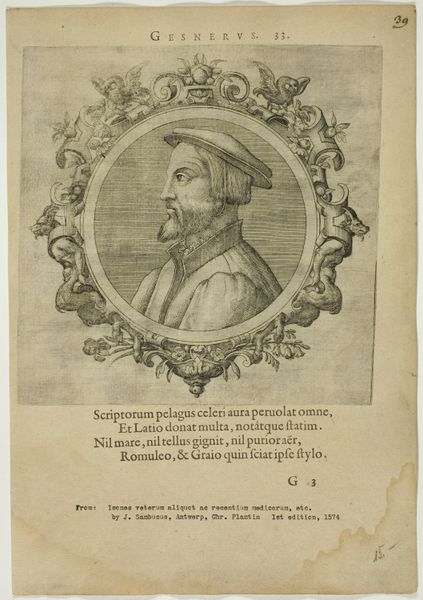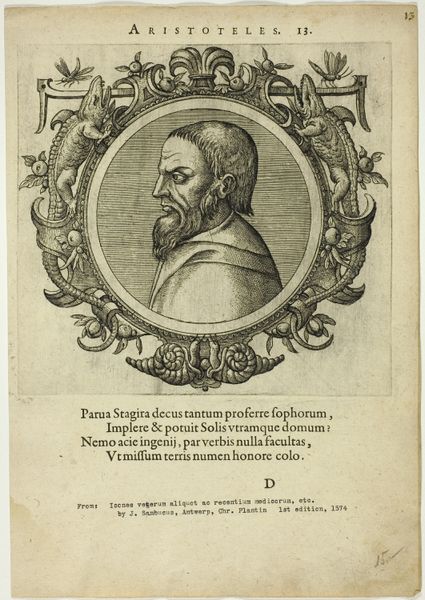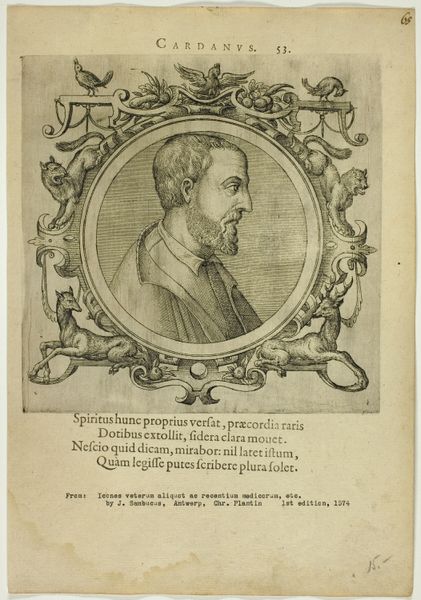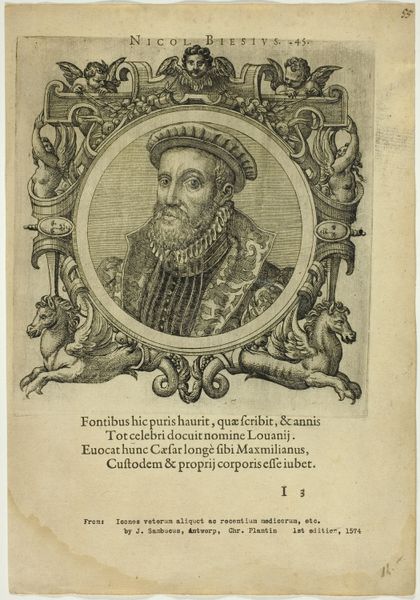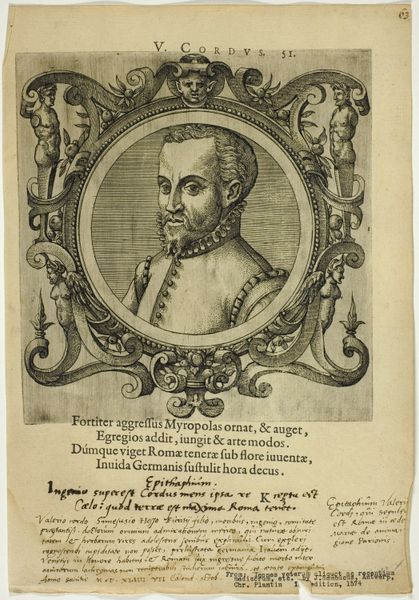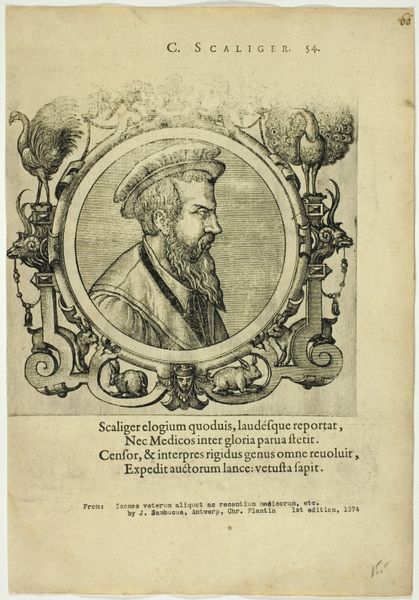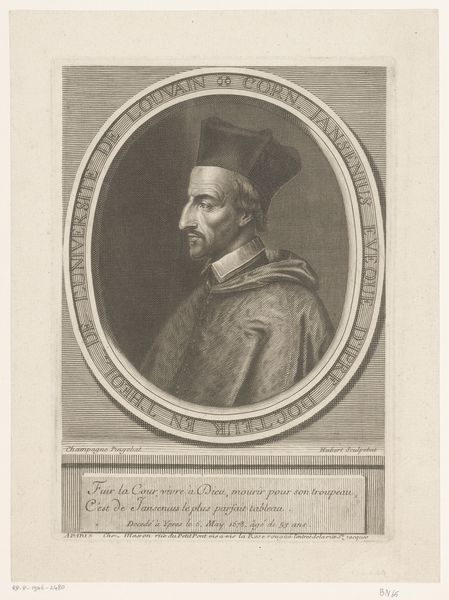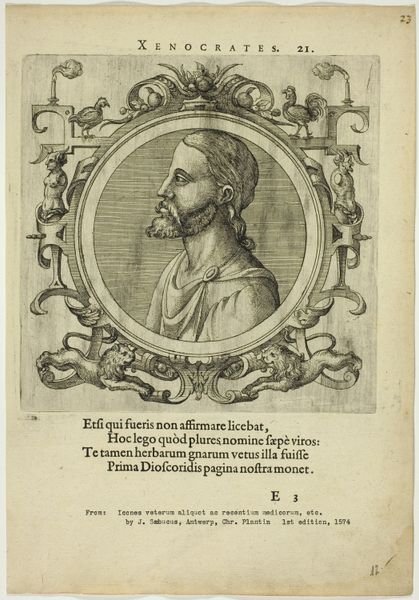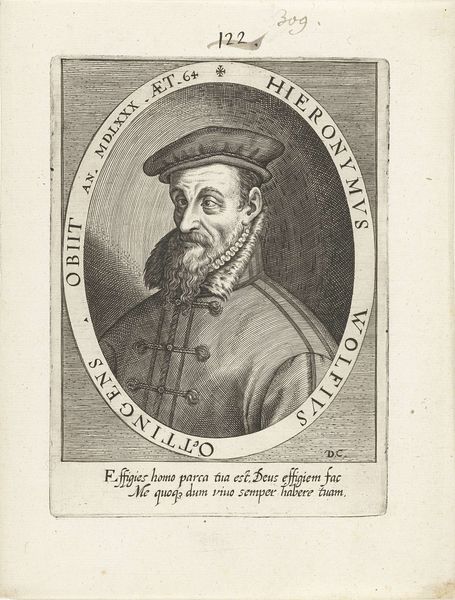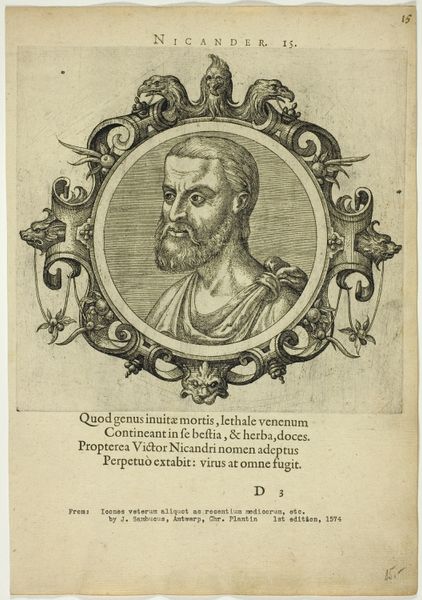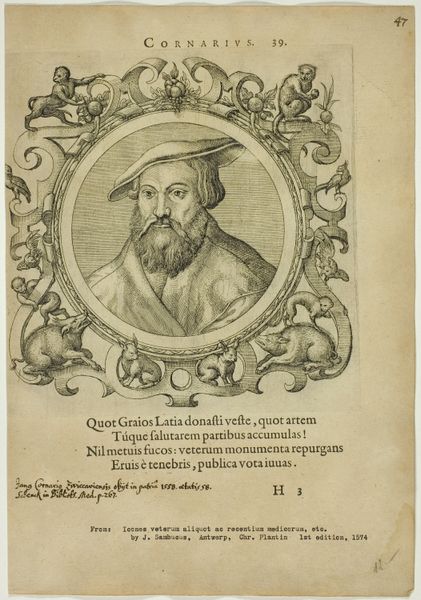
drawing, print, etching, paper
#
portrait
#
drawing
# print
#
etching
#
paper
#
11_renaissance
#
italian-renaissance
Dimensions: 188 × 187 mm (image); 312 × 215 mm (sheet)
Copyright: Public Domain
Curator: Looking at this print, the immediate impression is one of scholarly seriousness, don't you think? It's an etching, entitled “Portrait of P. Crassus,” possibly from 1574, made by Johannes Sambucus. Editor: Yes, absolutely, "scholarly" is the word. There's a distinct sense of learned authority about him. Even the ornate frame, populated with cherubs and these rather fierce looking beasts, seems to reinforce an impression of wisdom handed down through generations. Curator: It is fascinating how that framework almost functions as a symbolic library or a coat of arms – indicating status and intellect. The circular frame itself suggests completeness, eternity, perhaps reflecting on Crassus’ enduring legacy through knowledge. Editor: Or maybe it suggests the circular nature of knowing? Learning never truly ends, it spirals onward… and back. The almost obsessive detail is remarkable. Curator: That intricacy is typical of Renaissance printmaking. It allowed for wide distribution of ideas, but what do you make of the Latin inscription? "He prefers to be known by the garment of his intellect…" It speaks to the core values of the period, right? Editor: Absolutely, intellect as identity, and the pursuit of knowledge as a form of public declaration! The very *fabric* of one's being woven from scholarship, a wonderfully radical idea to propose at the time. Curator: What’s powerful is that even today, divorced from the historical context, that desire for intellectual recognition resonates. And isn’t that the power of potent iconography, its enduring appeal? Editor: It's true, isn't it? And despite its rather small size, there's an undeniable presence radiating from this portrait, perhaps born from the intensity with which knowledge was valued during the Renaissance. It demands attention. Curator: The portrait functions almost as a monument, miniaturized and disseminated – which, perhaps, underscores printmaking's crucial role in spreading the Renaissance ideal of humanism. Editor: Indeed. It reminds us how visual forms can profoundly influence not just perception, but enduring societal values. Curator: Precisely! Thank you for sharing these observations.
Comments
No comments
Be the first to comment and join the conversation on the ultimate creative platform.

